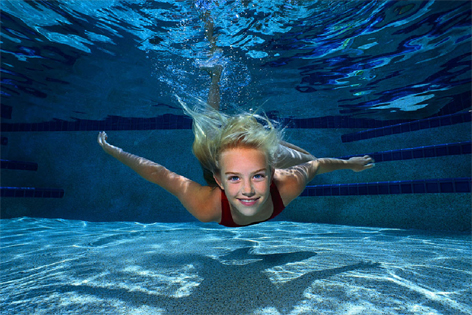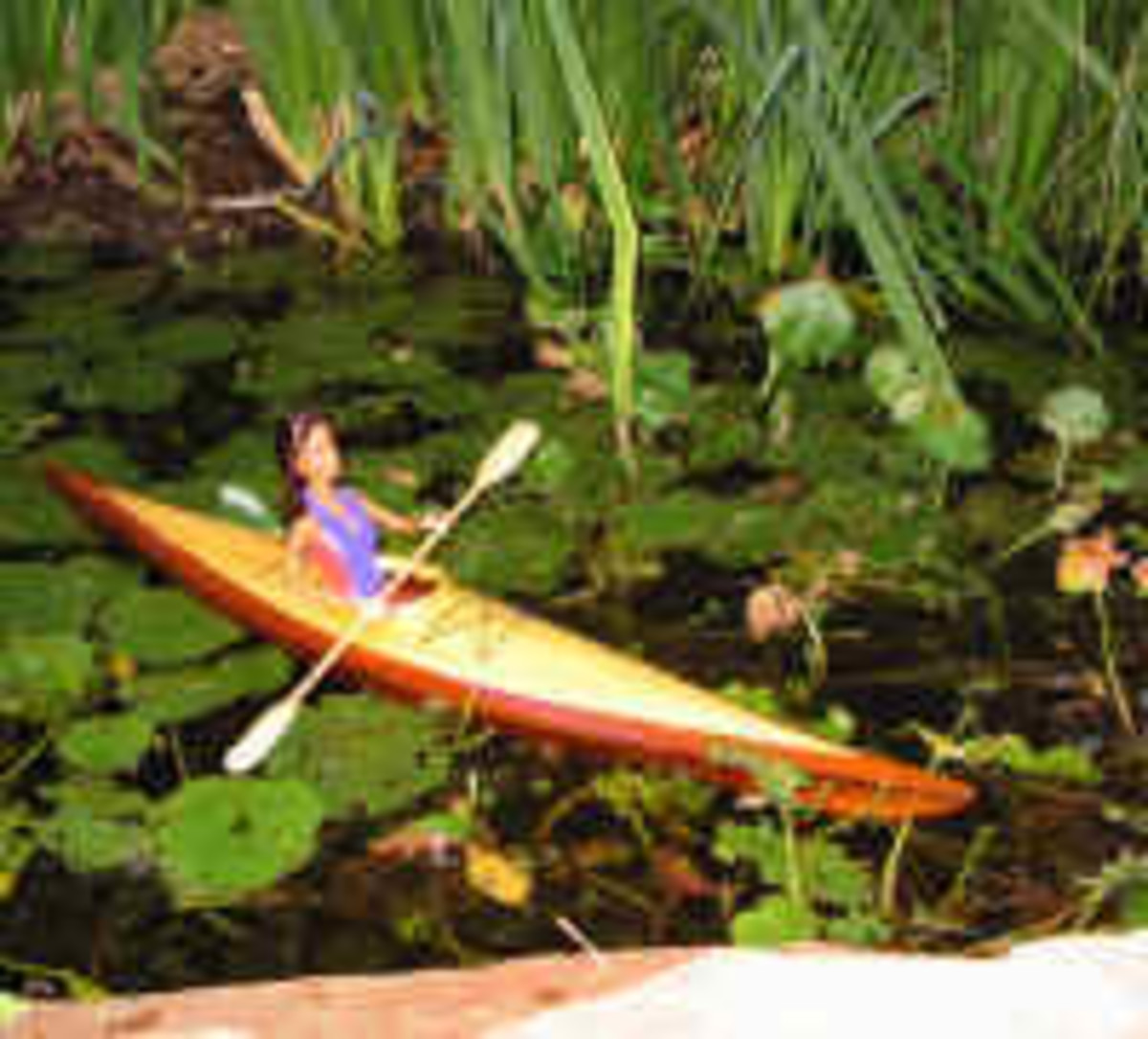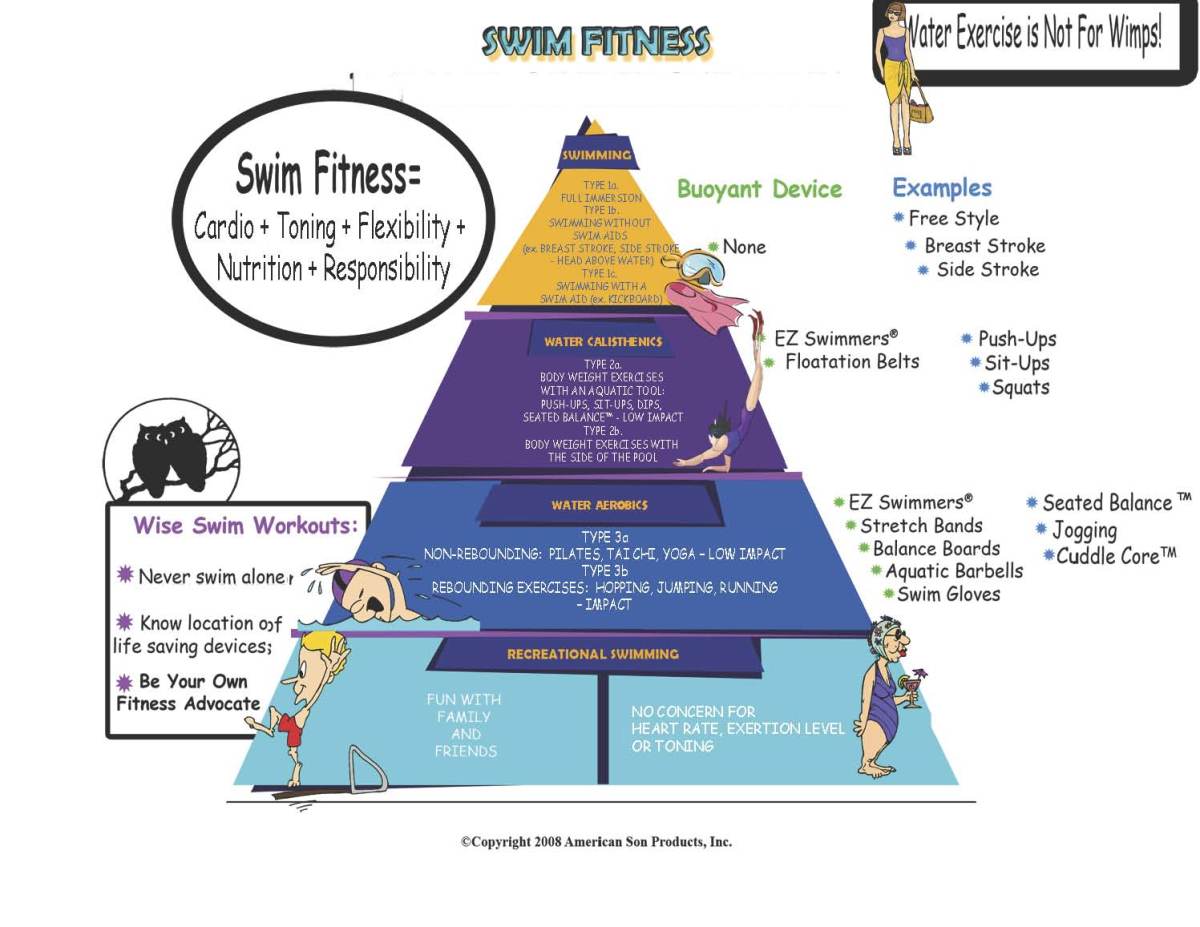10 Tips and Techniques on How to Swim

Swimming is defined as being the propulsion of a person through water by the movement of hands, arms, and legs. The combined movement of the arms, hands, and legs are to help you to stay afloat, move faster through water, and to propel forward either underwater or on the water. Likewise, the earliest records of swimming go back to the Stone Age due to the paintings that have been found. Other references that have been found besides paintings have been written records that date back from 2000 B.C. Some of these early written records that swimming has been used in are in the popular stories such as the Odyssey and Iliad. Now that a little history lesson has been given it is time to move on with how to swim and how to get others to swim.

Step 1. Fear of Water
Aquaphobia is the abnormal fear of water. Anyone's fear of water may stem from an accident in the bathtub/shower, trying to swim and feeling as if you are drowning, and prenotations from movies that deal with water that you will drown or something bad will happen to you if you are in the ocean such as a shark attack. I believe for someone to get over their fear of water, they first must learn that they should not fear water despite what may or may not have happened to them in the past. They should try walking around in three foot water so, they could get use to the water again and to learn not to be afraid of it. In the meantime, they should try to avoid movies that deal with water and sharks such as Jaws, THE TITANIC, Deep Blue Sea, Into the Blue, etc. Therefore, they won't regain the fear of water due to the movie that they have watched; referencing how this happened in the movie and relating that to their lives and figuring that it will automatically happen to them failing to realize that it is after all a movie. After a while of walking around in the three foot water and they are finally comfortable with that depth, then ask the person if they are ready for the four foot depth and so on and so forth until they are comfortable in the deepest part of the pool.
Step 2: Reassurance
Constantly remind the person that you are teaching that they should try to remain calm and relaxed at all times. Always try to give them positive feedback whenever possible, so they are able to not freak out and have a panick attack. If you feel or think the person is starting to panick, it may be best to be right beside them in the water reassuring them and coaching them into understanding that nothing bad will happen to them while they are in the water and that practice makes perfect. Show the person how to wade in the water and how to kick their arms and hands back and froth properly. After awhile, these movements shall become apart of their routine and they will no longer have to think about it, but instead just act upon it. After they have treaded in the water and have learned this, then actually teaching the person to swim will become a lot easier.
Step 3: Practice Movements
Show the person that your trying to teach how to move their arms and the correct way to move them. Therefore, while they are practicing they are learning the right movements that will help them to swim and to avoid drowning in a pool. Also, you can get into the water yourself to give a better demonstration on how to move your arms, if the person is a better visual learner instead of an audio learner. If the person is making any mistakes you can correct them and continue to show them how to do the movement properly until they are doing it right to your satisfaction.
Step 4: Kicking
The next step is a good as any and that it to help the person with their kicking. Have the person get into three feet water, if they are not comfortable with a bigger depth and help them to kick their legs. Tell them if they are kicking their legs the wrong way and correct them, so they feel more confident when they are actually trying to learn the full movement of swimming. This will help to build their confidence and really help them to feel as if they are going to be able to learn how to swim.
Step 5. Lifting
This step is where you try to get the person you are trying to teach to lift their feet off the ground. This may be a hard thing to do since the person may feel as if they are going to drown if they do this. Reassure them that they won't and stand next to them when they are going to try this. This will help them to trust you and to do as you ask.

Step 6: Practice Swimming
Have the person that you are teaching to practice the arm movements and kicking that you have previously taught them. Remind them to not fear the water and to try their hardest in swimming. Constantly, give them positive feedback and to tell them how they are doing a great job. Avoid negative feedback that may discourage them from wanting to continue swimming. Only give feedback on how they could correct a movement or the way they are kicking if it is necessary.
Step 7: Swimming Widths
As he person you are teaching, is starting to slowly and surely catch on the ways to swim, have them swim the widths of the pool. This may be a hard thing to get them to do especially if they aren't thoroughly comfortable with swimming yet. Therefore, you should wait until they are comfortable and bring up the suggestion to them. Tell them how they are a good swimmer and that they should feel as if they are good swimmer to. Encourage them on the fact that you know that they can swim the widths of the pool. Avoid pressure and coming down too hard on the person you are teaching.
Step 8: Strokes
Teach the person that you showing how to swim, the different ways that they can swim. Therefore, the person who is learning to swim can figure out the one way that they like the best. Avoid pressure and reassure the person that this is fun and yet beneficial. Try to get the person to try different styles of swimming suh as breaststroke and freestyle. After they have tried the different styles, ask them which one they like the best and tell them to practice that one when they swim, if they want to.
Step 9: Deep End
After the person you are teaching is done swimming in five feet water, try to get them to get the courage to swim in the deep end of the pool, which would be about 6ft and up side of the pool. Don't put any pressure on them to swim in the deep end. Encourage them that they can do it. If they do not want to swim in the deep part, have them grab onto the edges of the pool, in the deep end. Soon, with all of the positive feedback, they will finally have the confidence to swim in the deep end.
Step 10: Swimming Freely
By this step, the person that you are teaching to swim should be able to swim by themselves. No longer should you have to swim with them while they are in the pool or give them constant compliments of how well they are doing. They have the confidence and the security to swim widths, swim different styles such as freestyle and backstroke, and know that they are the ones that will keep themselves from drowning.
Tips To Remember....
Always strive to teach someone or yourself to uphold that confidence that you have the ability to swim. Remember that if babies can swim, then you can most likely learn to swim no matter your age. When you are practicing lifting and you feel as if you would drown, use floaties until you are comfortable to move around the pool without them. Other accessories you could use are a pair of googles, water float, or nose plugs. Always remember to practice your breathing and learn how long you can hold your breath underwater. This will help you to learn how long you can swim underwater without having to come up for air. Also, breathing helps with how fast or slow you move through the water. Remember that we are naturally buoyant and that the man reason why people do drown is because they panick and think that they are going to drown. Remain calm and always always always remember to avoid any movies such as the TITANIC.. I repeat do not watch the Titanic. I hope my hub has helped.








